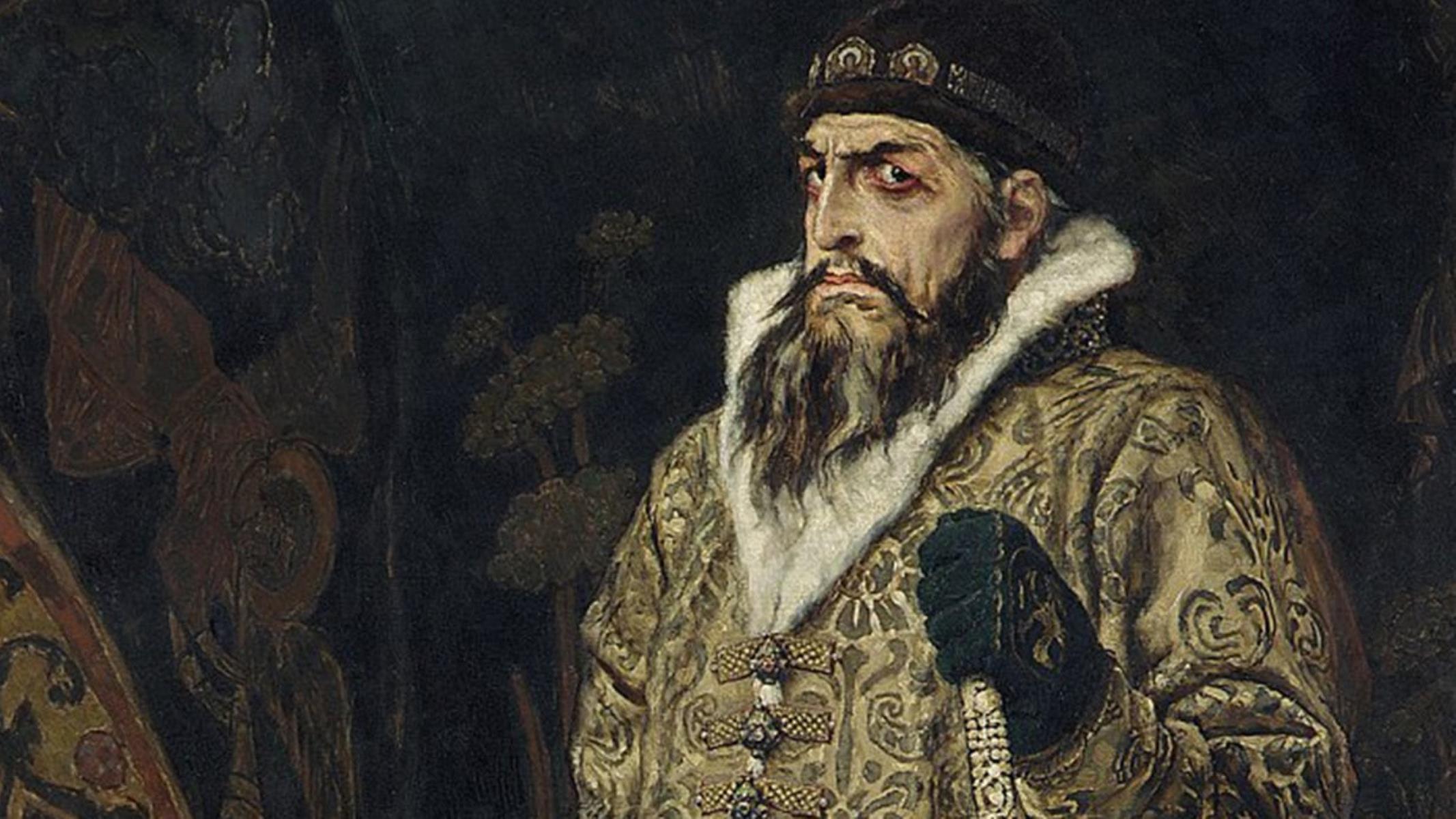
Ivan IV, also known as Ivan the Terrible, is one of the most fascinating figures in Russian history. As the first Russian ruler to be officially crowned as Tsar, Ivan IV left an indelible mark on the country during his reign from 1547 to 1584. While his nickname “the Terrible” may evoke images of a tyrant, there is much more to Ivan IV than meets the eye. In fact, he was a complex and enigmatic ruler, known for both his accomplishments and his notorious outbursts of violence.
In this article, we delve deeper into the life and legacy of Ivan IV, exploring 20 captivating facts that shed light on various aspects of his rule. From his childhood to his military campaigns, and from his relationship with his wives to his impact on Russian society, each fact offers a glimpse into the complex character of this infamous monarch.
Key Takeaways:
- Ivan IV, also known as Ivan the Terrible, was the first Tsar of Russia who ruled with a complex and violent personality, expanding the Russian Empire and leaving a lasting impact on its history.
- Ivan IV’s reign was marked by significant changes, including the establishment of the Oprichnina, sweeping legal reforms, and a fascination with the oprichniki, while also being accused of killing his own son and ordering brutal massacres.
Ivan IV was the first Tsar of Russia.
Known as Ivan the Terrible, he assumed the throne at the young age of 16 in 1547 and ruled until his death in His reign marked several significant changes in Russian history.
He established the Oprichnina.
Ivan IV created a separate government institution called the Oprichnina, which operated parallel to the regular government. It was responsible for maintaining his personal security and implementing his policies.
Ivan IV had a complex and violent personality.
While known as “the Terrible,” Ivan IV was a fiercely intelligent and deeply religious leader. However, he also had a cruel and unpredictable side, often committing acts of violence against his own people and even his own family.
He expanded the territory of the Russian Empire.
Ivan IV embarked on a series of military campaigns that resulted in the annexation of vast territories, including the conquest of Kazan, Astrakhan, and Siberia. These conquests significantly expanded Russia’s borders.
Ivan IV was the first Russian ruler to be crowned Tsar.
In 1547, Ivan IV was crowned Tsar of All Russia, adopting the title that had previously been used by Byzantine emperors. This coronation symbolized the consolidation of his power and his status as an absolute monarch.
He enacted sweeping legal reforms.
Ivan IV introduced a comprehensive legal code known as the Sudebnik, which standardized laws and legal proceedings throughout the Russian Empire. This reform aimed to establish a more centralized and efficient legal system.
Ivan IV married several times.
Throughout his life, Ivan IV had multiple marriages. His most notable consort was Anastasia Romanovna, who tragically died at a young age. Ivan IV’s turbulent personal life mirrored the turmoil of his reign.
He established the St. Basil’s Cathedral in Moscow.
Ivan IV commissioned the iconic St. Basil’s Cathedral, also known as the Cathedral of Vasily the Blessed. Its unique architectural style and vibrant colors make it one of the most recognizable landmarks in Russia.
Ivan IV had a fascination with the oprichniki.
The oprichniki were Ivan IV’s personal bodyguards who were renowned for their loyalty and ruthlessness. Despite their notorious reputation, they played a significant role in maintaining the Tsar’s power.
He was accused of killing his own son.
Ivan IV’s relationship with his eldest son and heir, Ivan Ivanovich, was strained. It is widely believed that Ivan IV struck his son during an argument, leading to his untimely death. This tragedy further contributed to Ivan IV’s reputation as a tyrant.
He was a patron of the arts.
Ivan IV supported the development of Russian art and culture. He established the Print Yard, a printing house where books were published, and encouraged the work of Russian artists and craftsmen.
Ivan IV suffered from a deteriorating mental state.
As he grew older, Ivan IV’s mental health began to decline. He became increasingly paranoid and prone to violent outbursts. This resulted in a reign marked by instability and fear.
The Livonian War was a significant event during Ivan IV’s rule.
Ivan IV’s desire to gain control over Livonia, a region encompassing present-day Estonia and Latvia, led to a prolonged conflict known as the Livonian War. The war ultimately ended without a clear victory for either side.
Ivan IV founded the first Russian secret police.
During his reign, Ivan IV established the first Russian secret police, known as the Chosen Council. This organization was responsible for identifying and suppressing any potential threats to Ivan IV’s authority.
He was responsible for the massacre of Novgorod.
In 1570, Ivan IV ordered a brutal massacre in the city of Novgorod, resulting in the deaths of thousands of innocent people. This event is considered one of the darkest moments of his reign.
Ivan IV had a fascination with torture.
Known for his sadistic tendencies, Ivan IV took pleasure in inflicting pain on others. Torture methods used during his reign included flogging, burning, and even feeding victims to wild animals.
He abolished the Council of Boyars.
In an effort to consolidate his power, Ivan IV dissolved the Council of Boyars, a group of nobles who advised the Tsar. This move further centralized authority under his rule.
Ivan IV’s reign was marked by economic reforms.
Despite the turmoil and violence of his reign, Ivan IV implemented various economic reforms aimed at stimulating trade and agriculture. He sought to modernize Russia’s economic system and strengthen its position on the world stage.
He sought to establish a strong autocracy.
Ivan IV believed in the absolute power of the Tsar and sought to establish a strong autocratic rule. His reign was characterized by a desire to centralize authority and eliminate any potential challenges to his power.
Ivan IV left a lasting impact on Russian history.
Ivan the Terrible’s reign marked a turning point in Russian history. His controversial and often brutal actions had a profound influence on politics, culture, and the development of the Russian Empire.
Conclusion
In conclusion, Ivan IV, commonly known as Ivan the Terrible, was a fascinating historical figure with a complex legacy. Despite his notorious reputation, there is much more to Ivan IV than meets the eye. Through his rule, he left an indelible mark on Russian history, both through his accomplishments and his controversial actions.From his early achievements as a skilled strategist and political reformer to his later descent into tyranny and paranoia, Ivan IV’s reign was marked by both greatness and brutality. His creation of the Oprichnina and the construction of iconic architectural landmarks such as St. Basil’s Cathedral demonstrate his ambition and vision for a strong Russia.However, Ivan IV’s violent outbursts and the countless lives lost during his reign cannot be overlooked. His legacy is one of both admiration and terror, leaving historians and scholars intrigued by his motivations and actions.Overall, studying Ivan IV provides us with valuable insights into the complexities of human nature and the intricate dynamics of power. His story serves as a reminder to tread carefully when examining historical figures, as they often embody multifaceted personas that challenge our preconceived notions.
FAQs
1. Was Ivan IV really as terrible as his nickname suggests?
Ivan IV’s reputation as “the Terrible” stems from his brutal acts, including the massacre of Novgorod. However, it is important to consider historical context and recognize that he also made significant contributions to Russia’s political and cultural development.
2. What were some of Ivan IV’s major achievements?
Ivan IV centralized power, enacted administrative reforms, expanded Russia’s borders, and commissioned remarkable architectural projects like St. Basil’s Cathedral.
3. Why did Ivan IV create the Oprichnina?
The Oprichnina was created to counterbalance the power of the nobility and eliminate opposition to Ivan IV’s rule. It effectively allowed him to consolidate power and exert control over the Russian state.
4. What led to Ivan IV’s descent into tyranny?
There are various theories surrounding the factors that contributed to Ivan IV’s transformation into a tyrant. Some suggest mental illness, trauma, or the influence of corrupt advisers played a role in shaping his later reign.
5. How did Ivan IV’s reign impact Russia?
Ivan IV’s reign had a lasting impact on Russia’s history. His policies and reforms laid the groundwork for the development of a strong centralized state and shaped the country’s path for centuries to come.
If you're fascinated by the life of Ivan the Terrible, there's more to explore! Uncover astonishing facts about this notorious ruler, delve into the rich tapestry of Russian history with intriguing insights about the Kremlin, and discover the controversial legacy of the Tsar of Russia through the lens of his iconic statue. Each topic offers a unique perspective on one of history's most complex figures, shedding light on his reign, his impact, and the enduring mysteries surrounding his life and times.
Was this page helpful?
Our commitment to delivering trustworthy and engaging content is at the heart of what we do. Each fact on our site is contributed by real users like you, bringing a wealth of diverse insights and information. To ensure the highest standards of accuracy and reliability, our dedicated editors meticulously review each submission. This process guarantees that the facts we share are not only fascinating but also credible. Trust in our commitment to quality and authenticity as you explore and learn with us.


